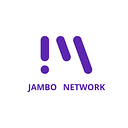The Polkadot ecosystem and Jambo’s development design (2)
The previous article introduced the advantages of the Polkadot ecosystem. For Polkadot, Substrate can support developers in all their projects by making developing a blockchain project like building with Lego blocks. Jambo maintains numerous customizable functions and modules for project developers under the Jambo industrial ecosystem through the Substrate framework and access slots, while safeguarding the data security of each project. All smart contracts are on one virtual machine in the main chain, and there will be multiple application modules to achieve effective separation of multiple application data.
For different smart contracts, the difference in importance is self-evident. If a vertical implementation of one main chain is used, there will be serious performance scaling problems like Ether, and the excessive burden of data volume synchronization will also cause security problems. The system application chain can take care of both parts, and each application module is split to solve the lack of performance of the main chain, and the data storage is split to solve the scalability problem of data governance.
At the same time, in order to ensure the security of the business system of the Jambo ecosystem, Jambo’s sidechain is designed for the three main business scenarios, providing a more transparent environment for users on the chain. Integrate identity system, reputation system, anti-fingerprint system, decentralized voting, and some additional anti-fraud technologies, using a series of machine learning algorithms and manual review (voting or phisher punishment) to provide data for publishers and advertisers and ensure a complete network environment. The user’s identity and reputation system secures the ecosystem by providing an additional layer for reliability and protection.
The application scenario of the JAMBO side chain consists of three main parts:
1. Production of Advertising
Advertisers post their advertising needs on the advertising trading platform, and the advertisement producer participates in the bidding; the successful advertisement producer begins to produce multimedia advertising content, including but not limited to pictures, videos, web pages, AR, VR, etc., when the production is completed it gets delivered to the advertiser.
After the task is completed, the advertising host will include the advertising smart contract in the newly added block, and at the same time broadcast the new delivery plan to the entire network in the form of news. The oracle receives the message, pulls the smart contract from the chain and indexes it.
2. Digital advertising media broadcasts advertisements
When the user accesses an application, it collects user information through edge computing, creates a unique digital identity for each user, and sends the user’s digital identity to the advertising matching engine. The advertisement matching engine sends the media attributes and the user’s digital identity to the oracles participating in the advertising ecosystem and waits for the oracles to return the recommended advertising content.
3. User behavior recall
The environment the consumer is in, needs to follow-up up on the behavior of the advertising audience before the advertisement is broadcast. Afterwards the advertising audience receives the advertisement in the application, and it starts to collect the follow-up behavior of the user, such as whether he/she clicks on it, whether it is watched repeatedly, whether to generate related content, etc., and to improve the user log on the chain. Furthermore, audiences can also set their own preferences, monetize their own data, and open it to providers to match advertisements that is more suitable for them.
